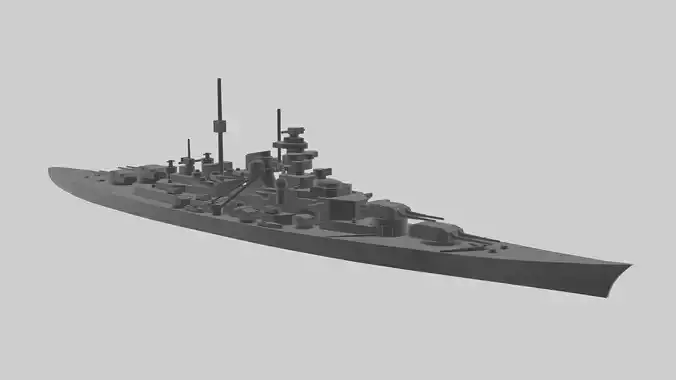1/14
The Bismarck-class of battleships were the biggest class of battleships built by Germany in WW2 and were the heaviest combatants to ever be completed for the Kriegsmarine. Two units were built: Bismarck and Tirpitz. The keels were laid down in 1936, with the launches taking place in 1939. Bismarck was commissioned in 1940, Tirpitz following later in 1941. Even though Germany was banned from building large combatants, both units were completed and saw service, though they never had carreers like other ships.
This class had a high speed and decent armament compared to other nations, but had an armour layout which made it difficult for enemy shells to penetrate fully. This would prove itself worth once Bismarck saw battle.
The first and only sortie of the Bismarck is one of the most legendary events of the Second World War. After sinking the flagship of the Royal Navy, HMS Hood, she was hunted down by the entirety of the Royal Navy until she was forced to a last stand. After many hours of constant battering the crew scuttled the brand new but heavily damaged warship, with only a small portion of the crew surviving. Even though her only mission had been brief, the deathtoll was high. The ship had cost more than 3000 men their lives, 1400 of them being British.
Out of fear to loose their remainging heavy battleship, the Kriegsmarine kept Tirpitz in a fjord in Norway as a fleet in being, where she would remain until the end of her career. Tirpitz would eventually be sunk by bombers in 1944, with no way to escape in the fjord. The wreck was salvaged in the late 40s and 50s, with some parts still remaining. Bismarck's wreck would be discovered in 1989, the hull being mostly intact, the armour having held up against the massive abuse. The superstructure and the turrets are scattered around the wreck.
Due to Bismarck's last stand, the ship and the class are shrouded in myths and legends, even though the ships themselves were only adequate for their time.
Note: This model is recommended to be used in the 1/3000 scale or bigger. The model itself isnt scaled, the scale table is down below.
1/4000: 6,25cm or 2.46in (not recommended)
1/3000: 8,3cm or 3.27in
1/2000: 12,5cm or 4.92in
1/1000: 25cm or 9.84in
For self calculation: The Bismarck is 250m or 820,21 feet long
The model is intended to be used with little supports as possible, yet some are recommended below the barrels on the main and secondary guns. The level of detail is more than mixed in this model, some parts may not be printed at all. I recommend using a resin printer for this, with supports placed under fragile parts like the cranes and individual decks. Up and Downsclaling might be possible, yet I dont know to what extend.
If you have ideas for more ships to model, feel free to message me.
REVIEWS & COMMENTS
accuracy, and usability.














